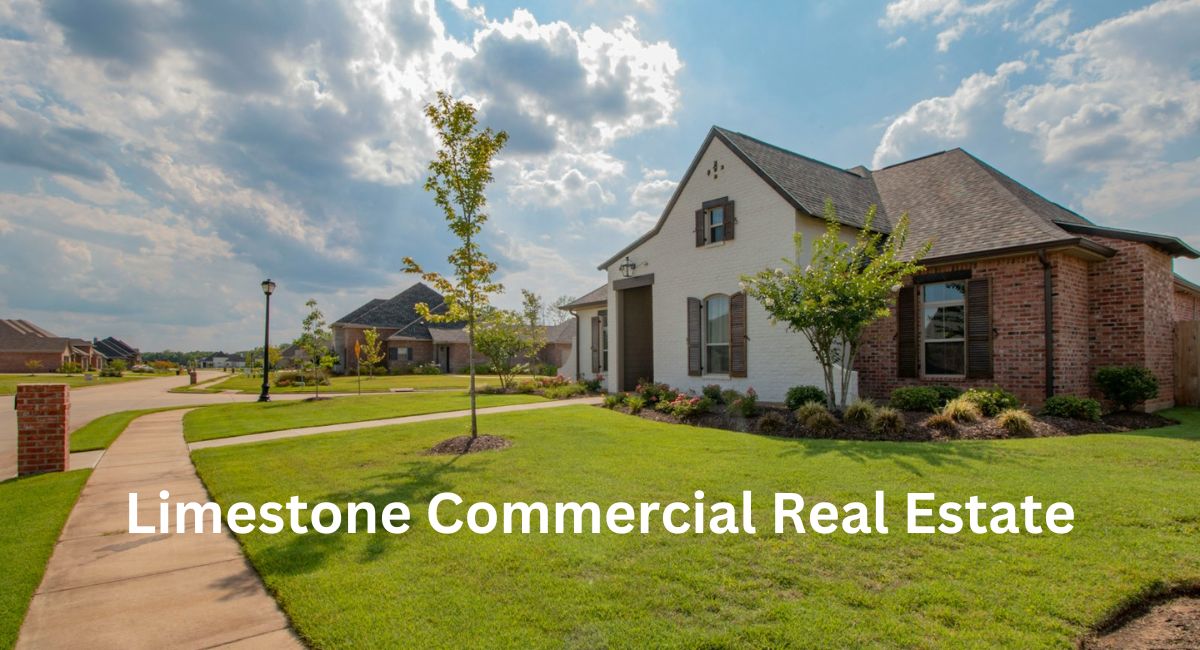Limestone Commercial Real Estate Investment: Unique and Profitable

Investing in limestone commercial real estate offers a unique and profitable venture, distinguished by the material’s enduring appeal and robustness. Limestone, a naturally occurring sedimentary rock, has been a cornerstone in construction for centuries, known for its aesthetic elegance and structural longevity. These properties are highly sought after in commercial real estate, enhancing the value and attractiveness of properties. Investors are drawn to limestone buildings for their historic charm, sustainability, and energy efficiency, often yielding higher returns due to their desirability and longevity. This niche market, while requiring specific maintenance and care, stands out for its potential for higher resale values and enduring appeal, making it a compelling option for discerning investors seeking long-term profitability and unique investment opportunities.
Introduction to Limestone Commercial Real Estate
A. Definition of Limestone Commercial Real Estate
Limestone commercial real estate refers to properties constructed primarily using limestone, a durable and aesthetically appealing natural stone. These properties include office buildings, retail spaces, and historical landmarks, valued for their unique architectural charm and robustness.
B. Brief History and Evolution of Limestone Structures in Commercial Settings
Limestone has been used in architecture for centuries, prized for its durability and versatility. In commercial settings, its use evolved from purely structural to a symbol of prestige and elegance, adorning facades of banks, museums, and high-end retail establishments, reflecting a rich architectural heritage.
C. Current Market Overview of Limestone Commercial Properties
The current market for limestone commercial properties is niche yet stable, attracting investors for their rarity and timeless appeal. These properties often command higher market values and rents, appealing to businesses seeking a distinguished presence. Environmental sustainability trends further enhance their appeal in today’s market.
Unique Characteristics of Limestone in Real Estate
A. Physical Properties of Limestone and Their Implications for Commercial Use
Limestone’s key physical properties include durability, weather resistance, and natural insulation. These traits make it ideal for commercial real estate, ensuring long-term structural integrity, reduced maintenance costs, and suitability for diverse climatic conditions.
B. Aesthetic Appeal of Limestone in Architecture
Limestone’s aesthetic appeal lies in its warm, natural tones and textured finish, lending a timeless elegance to buildings. Its versatility allows for various architectural styles, from classical to modern, making limestone structures stand out in urban landscapes for their distinctive and prestigious appearance.
C. Environmental Benefits and Sustainability Aspects
Limestone’s environmental benefits include its natural abundance and low-energy processing, making it a sustainable building material. Its thermal properties contribute to energy efficiency in buildings, aligning with green building trends and reducing the carbon footprint of commercial real estate developments.
Market Analysis and Trends
A. Current Trends in Limestone Commercial Real Estate
Current trends in limestone commercial real estate show a growing interest in sustainable and unique properties. The demand for limestone buildings is driven by their energy efficiency, historical value, and distinctive aesthetic, appealing to businesses and investors seeking eco-friendly and culturally rich spaces.
B. Comparative Analysis with Other Types of Commercial Real Estate
Compared to other commercial real estates, limestone properties often command higher prices due to their rarity and historical significance. They typically offer better long-term value retention, standing out for their unique architectural features and sustainability, contrasting with the more common steel and glass structures.
C. Geographical Hotspots for Limestone Commercial Properties
Limestone commercial properties are predominantly found in regions with rich limestone deposits, like parts of Europe and North America. Historic cities and cultural centers, particularly those with architectural heritage, are hotspots, attracting investors for their blend of historical significance and modern commercial viability.
Investment Opportunities and Challenges
A. Types of Limestone Commercial Properties Available for Investment
The range of limestone commercial properties for investment includes elegant office buildings, high-end retail spaces, and historic landmarks. These diverse property types cater to various business sectors, offering unique opportunities for investors seeking properties with architectural distinction and historical value.
B. Analyzing the Return on Investment (ROI) and Profitability
Analyzing ROI for limestone properties involves considering their higher acquisition costs against potential long-term gains. These properties often yield higher rents and maintain value due to their uniqueness and desirability, leading to potentially profitable returns for investors focused on long-term appreciation and stable income.
C. Challenges and Risks Associated with Limestone Real Estate Investment
Investing in limestone real estate carries challenges like higher upfront costs, specialized maintenance needs, and market niche limitations. Preservation regulations can also impact renovations and usage, adding complexity to investment decisions. These factors necessitate thorough market research and risk assessment for potential investors.
Case Studies
A. Successful Limestone Commercial Real Estate Investments
Successful limestone investments often involve properties that blend historical significance with modern functionality. Examples include restored limestone office buildings in prime locations or luxury retail spaces in historic districts, where investors have capitalized on the unique appeal and prime positioning to achieve substantial returns.
B. Lessons Learned from Less Successful Ventures
Less successful limestone ventures highlight the importance of location, market demand, and maintenance costs. Challenges such as high renovation expenses and restrictive preservation laws have taught investors the need for thorough due diligence and adaptive planning in the niche limestone real estate market.
C. Future Potential Based on Past Trends and Current Market Analysis
Future potential in limestone real estate is promising, especially in areas with historical value or architectural significance. Market analysis indicates a steady demand for unique and sustainable properties. Trends suggest a growing niche market, particularly for properties that skillfully combine historical allure with modern amenities.
Legal and Regulatory Considerations
A. Zoning Laws and Regulations Affecting Limestone Properties
Zoning laws significantly impact limestone properties, dictating where they can be developed or modified. Investors must navigate these regulations, which vary by region, to ensure compliance in areas designated for historical preservation, commercial use, or specific architectural styles.
B. Historic Preservation and Conservation Considerations
Historic preservation laws play a crucial role in limestone property investments. These regulations protect the architectural integrity of historic buildings, often requiring investors to maintain original features and seek approvals for alterations, thus impacting renovation scope and costs.
C. Legal Aspects of Purchasing and Owning Limestone Commercial Properties
Legal complexities in purchasing limestone properties include thorough title searches to identify any restrictions or easements. Investors must also consider legal obligations related to maintenance, safety standards, and insurance, especially for properties with historic value or in conservation areas.
Conclusion:
In conclusion, investing in limestone commercial real estate offers a unique blend of historical allure, aesthetic distinction, and long-term profitability. While the market for such properties is niche, it is marked by a steady demand driven by their sustainability, architectural uniqueness, and cultural significance. However, potential investors must navigate specific challenges, including higher upfront costs, specialized maintenance requirements, and stringent legal and regulatory frameworks, particularly concerning historic preservation. Despite these challenges, limestone commercial real estate stands as a compelling investment opportunity, promising not just financial returns but also the preservation and appreciation of historical and architectural heritage in the modern commercial landscape.
![]()






